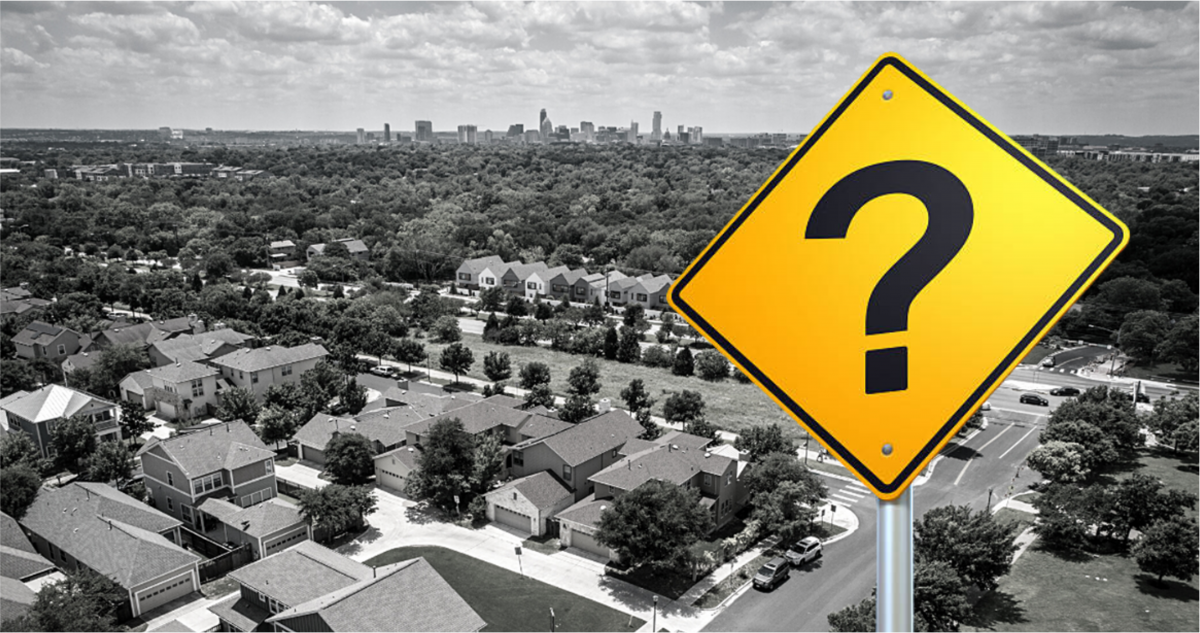
KEY POINTS:
- The Austin City Council waited more than month before releasing its ordinance greatly reducing local compatibility standards and parking requirements
- The ordinance classifies many small neighborhood streets as “large corridors,” allowing tall structures to be built just 100 feet from existing homes
- It also favors the development of short-term rentals over affordable units, which could increase housing costs across the city
On January 6, the City of Austin finally released a copy of Ordinance No. 20221201-056, a major change to the Land Development Code that was passed more than a month earlier—after a hearing that was too confusing and chaotic for most residents to follow.
As we warned, the approved ordinance does two things:
- It weakens compatibility standards along dozens of roadways by a whopping 80%. Compatibility standards govern the height and setback of big buildings near residential areas, and the new ordinance will allow very tall structures to be built just 100 feet from existing homes (440 feet closer than before).
- It removes or reduces parking requirements along the same roadways, allowing the construction of multi-unit, mixed-used developments without adequate parking for new residents and businesses. Like compatibility requirements, Austin’s parking requirements have protected our community’s neighborhoods for decades—particularly those located near busy commercial districts.
We’re still analyzing the text of the ordinance, but it’s beginning to become clear why City Hall took so long to release a copy to the public. Here are a couple of provisions that are sure to shock some local residents:
The City Council’s Nonsensical “Large Corridor” Designation
On October 28 of last year, city officials sent this half-page letter to more than 200,000 addresses across our community, announcing the proposed compatibility and parking changes on “certain roadways.” There were no details of which roads would be included, or what the changes would be.
More details surfaced in November, when Austin’s Planning Commission recommended that the community’s “large corridors” be treated the same way as light-rail corridors, with compatibility setbacks for the largest buildings reduced from 540 to 100 feet.
Now that the approved ordinance is publicly available, we can see exactly which roadways are impacted by the council’s plan—but the list makes little sense. Council members treat IH-35, SH-45, and US 290 as large corridors, but they have also labeled two-lane neighborhood streets like Clarkson Avenue, Crystalbrook Drive, Pecan Brook Drive, and Manor Road with the same designation.
In contrast, six-lane arteries like Airport Boulevard and William Cannon Drive are classified as “medium corridors,” with less intensive compatibility changes in the surrounding areas.
Community Not Commodity is currently working on a citywide map showing all compatibility changes, and we’ll update our readers as soon as it’s completed.
Short-Term Rentals Get a Bigger Win Than Affordable Housing
Supporters of the city council’s plan repeatedly cited a shortage of affordable housing as rationale for the compatibility changes, but the final ordinance actually does more to help Austin’s short-term rental industry, which experts believe is hurting local affordability.
In order to take advantage of extra bonuses in the new compatibility rules, developers must ensure that 10% of new residential units meet affordability requirements (or pay a “fee-in-lieu” to the City of Austin’s affordable-housing fund).
But the ordinance gives those same developers the freedom to devote a greater percentage of units in new buildings (15%) to the construction of short-term rentals. According to one recent study, an increase in a community’s short-term rentals as small as 1% leads to a corresponding increase in both rents and housing prices.
Contact Mayor Kirk Watson and your representative on the Austin City Council using the information below. Tell them the street designations in new ordinance don’t make sense, and that it will hurt affordability rather than help it! Check this map if you aren’t sure which council member represents you.
Together we can build an Austin for everyone!
Mayor Kirk Watson:
kirk.watson@austintexas.gov | 512-978-2100
Natasha Harper-Madison (District 1):
natasha.madison@austintexas.gov | 512-978-2101
Vanessa Fuentes (District 2):
vanessa.fuentes@austintexas.gov | 512-978-2102
José Velásquez (District 3):
jose.velasquez@austintexas.gov | 512-978-2103
José “Chito” Vela (District 4):
jose.vela@austintexas.gov | 512-978-2104
Ryan Alter (District 5):
ryan.alter@austintexas.gov | 512-978-2105
Mackenzie Kelly (District 6):
mackenzie.kelly@austintexas.gov | 512-978-2106
Leslie Pool (District 7):
leslie.pool@austintexas.gov | 512-978-2107
Paige Ellis (District 8):
paige.ellis@austintexas.gov | 512-978-2108
Zohaib “Zo” Qadri (District 9):
zohaib.qadri@austintexas.gov | 512-978-2109
Alison Alter (District 10):
alison.alter@austintexas.gov | 512-978-2110
You may send a single email to the mayor and all council members using this form.